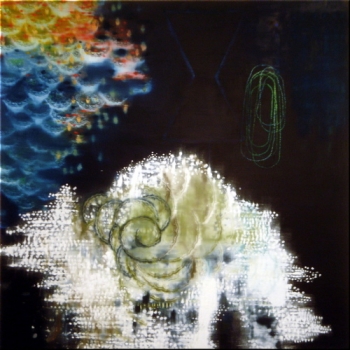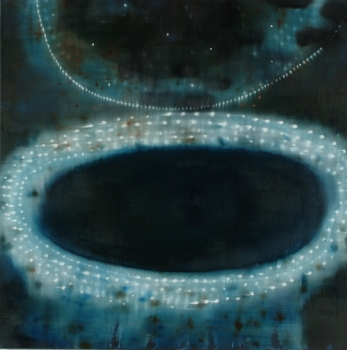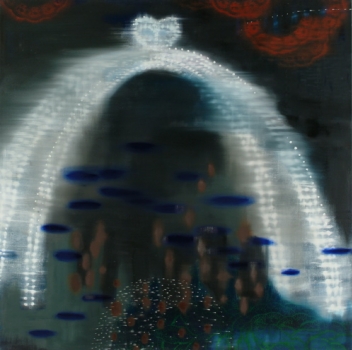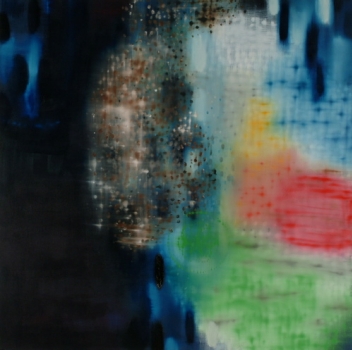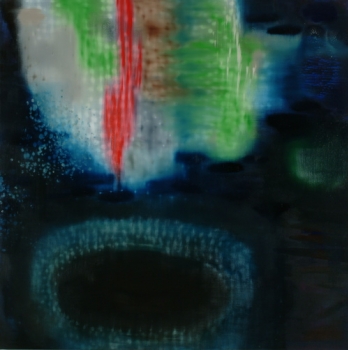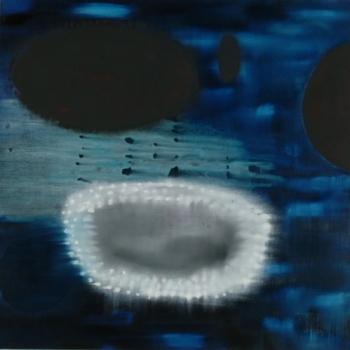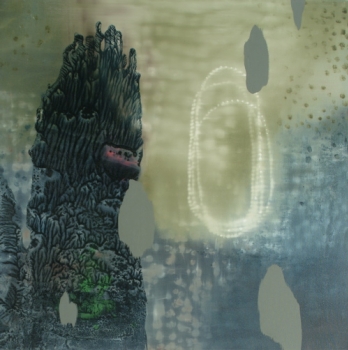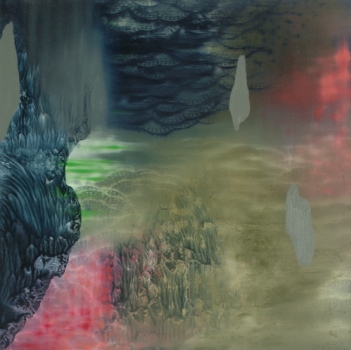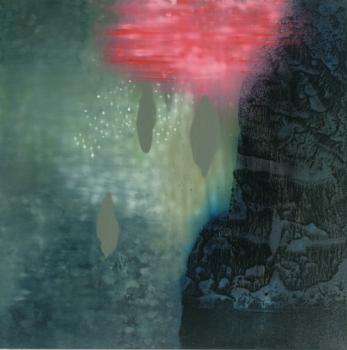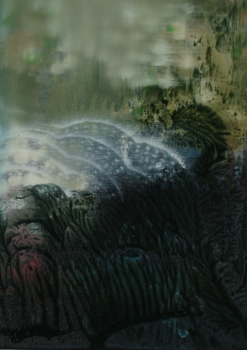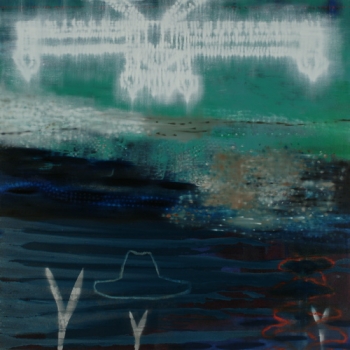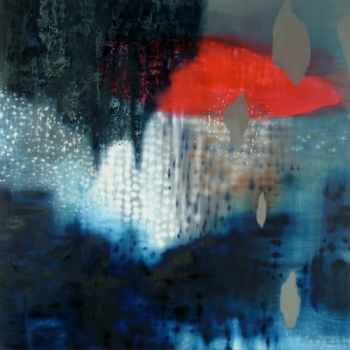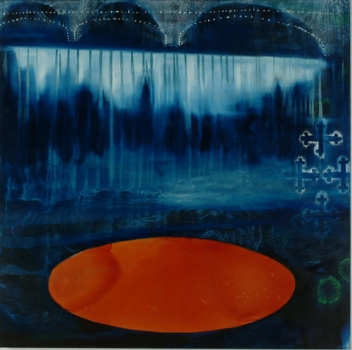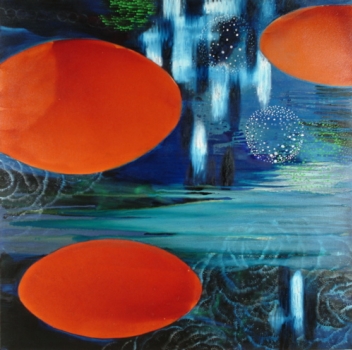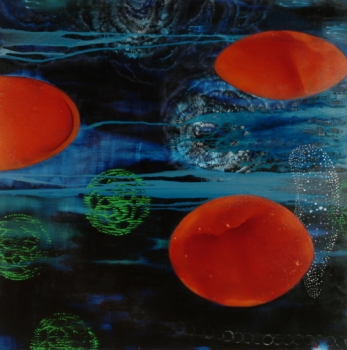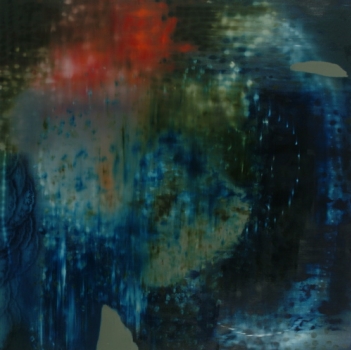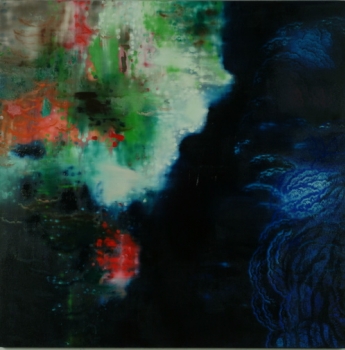Ghost River 2004 - 2005
3 May - 5 June 2004
Gallery East,
94 Stirling Hwy, North Fremantle, Perth Australia
and
1-19 March 2005
Span Gallery
45 Flinders Lane, Melbourne, Victoria, Australia
Ghost River Paintings 2004 -2005 was a series of paintings exploring the underworld of the Swan River, WA.
'My niece Jessie made a great comment. I asked her what she saw in the paintings (she's nearly 10) and she said "Its coral and underwater stuff".
"And what about the orange shapes?" – "Well, they could be skin cancers".
'And the water being very clear round the edges, a new creation, as it was to us ...equalling in beauty and excelling in grandeur the most favourite "parterre" of the curious florist ...but whilst contemplating the richness of the scene, we could not long forget with what destruction it was pregnant ...'
Matthew Flinders, 9 October 1802: North Barrier Reef, from Ferdinand Bauer,
An exquisite eye: the Australian flora & fauna drawings 1801-1820 of Ferdinand Bauer, 1997.
This project was funded by ARTSWA and the Australia Council.
All photographs by Suzi Wild.
The Ghost River catalogue text by Michele Elliot Dec 2004 (ISBN 0-646-44388-7) below:
Jo Darbyshire is a painter whose work is inextricably connected to place. Whilst her subject is not always site specific, she draws on sources that are both recognisable and obscure. Darbyshire sifts through geographical, cultural, historical and personal narratives and imagery to build up layers of meaning within her paintings.
Ghost River Paintings suggests water as apparition, an entity that no longer exists in the physical realm. It conjures up the notion of death and the spirit presence of another world. In this instance, a city's history, a kind of architectural ectoplasm emerges. Darbyshire's paintings re-present reflections of that which no longer exist. Disappearances, traces, sites of celebration and dark, intimate traumas.
In the same way that underwater worlds exist in their own parallel atmosphere, obscured and separated from us beneath the surface - by reflection, light, currents, ripples, waves and weather, this body of work depicts sparkling surfaces and unfathomable depths. The profound pull of memory and dream.
She tells me in conversation " … we sit here and at the same time, I am aware of the river over there. It's not just a surface but an entity, a living thing moving along, constantly in motion. I see it whole, above and below. And the process of making this work has been like swimming in (the river) … start here, a beginning … get in there and feel the current take you."
The Swan River, iconic and mutable, links port to city, coast to and. This body of water is bound up in Perth's identity and history. Darbyshire's previous work has engaged with lights and reflections of landmarks on and around the river - The Raffles Hotel, the Swan Brewery. Night ship of lights sailing on the blackness.
In these new paintings, the illuminations to commemorate the Queen's visit to Perth in 1954 and the Victorian bathing pavilion on the Esplanade in the early 1900's appear as fragile images mirrored on the watery surface, their memory floating. The suicide of a family member; death by drowning. Oblivion. Becoming and unbecoming, like ectoplasm recorded as fluid light in the spirit photographs of the time.
Simultaneously, it is a microscopic world of amoeba and cells. There is a sense of foreboding and mystery. Dark shapes, schools of fish or microbial organisms. The paintings are landscapes without horizon, a liminal place where boundaries have collapsed. Darbyshire's paintings offer multiple viewpoints. They present an elusive liquid vision that continually brings the eye back up to the surface. Am I looking down through the water, hovering above, or submerged and looking up, surrounded by it.
There is a material reverie in Darbyshire's work. The liquidity of the paint and its layering operates in a way that recollections drift through the mind to coalesce into corporeal thought. Gum resin stains appear like flotsam, washed along disrupting the flow. In other areas, she uses her fingers to apply paint, like trailing fingers through phosphorescence in water. The gesture of her hand leaves shimmering evidence of where she has been. Layers of reflection, water like memories layers of consciousness, thoughts like objects suspended in water float up to the surface not simply one place, one thought.
